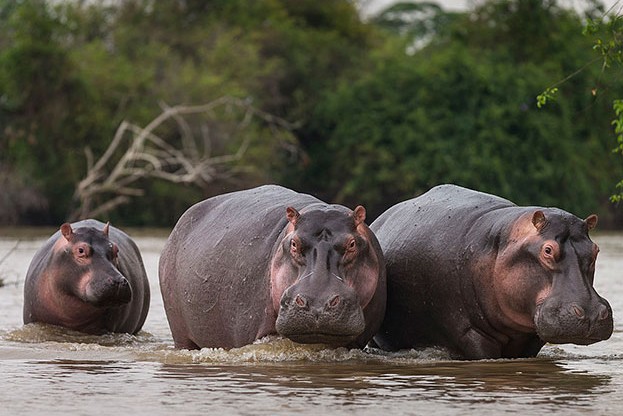News Highlight
Hippos living near Pablo Escobar’s former Colombia ranch may be shipped to India.
Key Takeaway
- Colombia is considering relocating 72 hippopotamuses to India and Mexico as part of an invasive species control strategy.
- The goal is to use food to entice the hippos into enormous iron containers, which will then be transported to the airport in Rionegro.
Hippopotamus
- About
- The hippopotamus, often known as the water horse or hippo, is an amphibious African ungulate mammal.
- It is thought to be the second-largest land mammal.
- Hippos have adapted well to aquatic life.
- The ears, eyes, and nose are high on the head, allowing the remainder of the body to stay submerged.
- Hippopotamuses had become extinct in northern Africa by 1800 and in southern Africa south of Natal and the Transvaal by 1900.
- They are still fairly widespread in East Africa, but their populations are declining across the continent.
- Threats
- Conflicts between humans and wildlife, as well as habitat loss.
- They are frequently hunted for their meat under the pretence of protection and for hippo fat and ivory canine teeth.
- Protection Status
- IUCN Red List: Vulnerable
- CITES: Appendix Ill
Significance of Hippos
- Hippos are essential to balancing freshwater ecosystems;
- Hence, their reduction is concerning.
- In addition, nutrient recycling
- Production of stuff that aids the survival of river fish and aquatic insects.
- Harbouring of aquatic birds.
- Habitat engineering through the creation of trails in bodies of water.
IUCN Red List
- The International Union for Conservation of Nature
- The IUCN is a membership organisation that is made up of both government and civil society organisations.
- It was founded in 1948 and is the world’s authority on the state of the natural world and the measures required to protect it.
- Furthermore, its headquarters are located in Switzerland.
- The IUCN Red List of Threatened Species
- It is a comprehensive global inventory of plant and animal conservation status.
- It assesses the extinction risk of species using a set of quantitative criteria.
- Additionally, the IUCN Red List Categories define the extinction risk of the species under consideration.
- Nine categories extend from NE (Not Evaluated) to EX (Extinct).
- Critically Endangered (CR), Endangered (EN) and Vulnerable (VU) species are considered to be threatened with extinction.
- Utility of the Red List
- It highlights the ongoing decline of Earth’s biodiversity and humans’ impact on life.
- In addition, it provides a globally recognised standard for measuring the conservation status of species over time.
- Scientists can examine how the percentage of species in a given category changes over time.
- They can also investigate the threats and conservation measures at the root of the observed trends.
Pic Courtesy: BBC
Content Source: Indian Express



